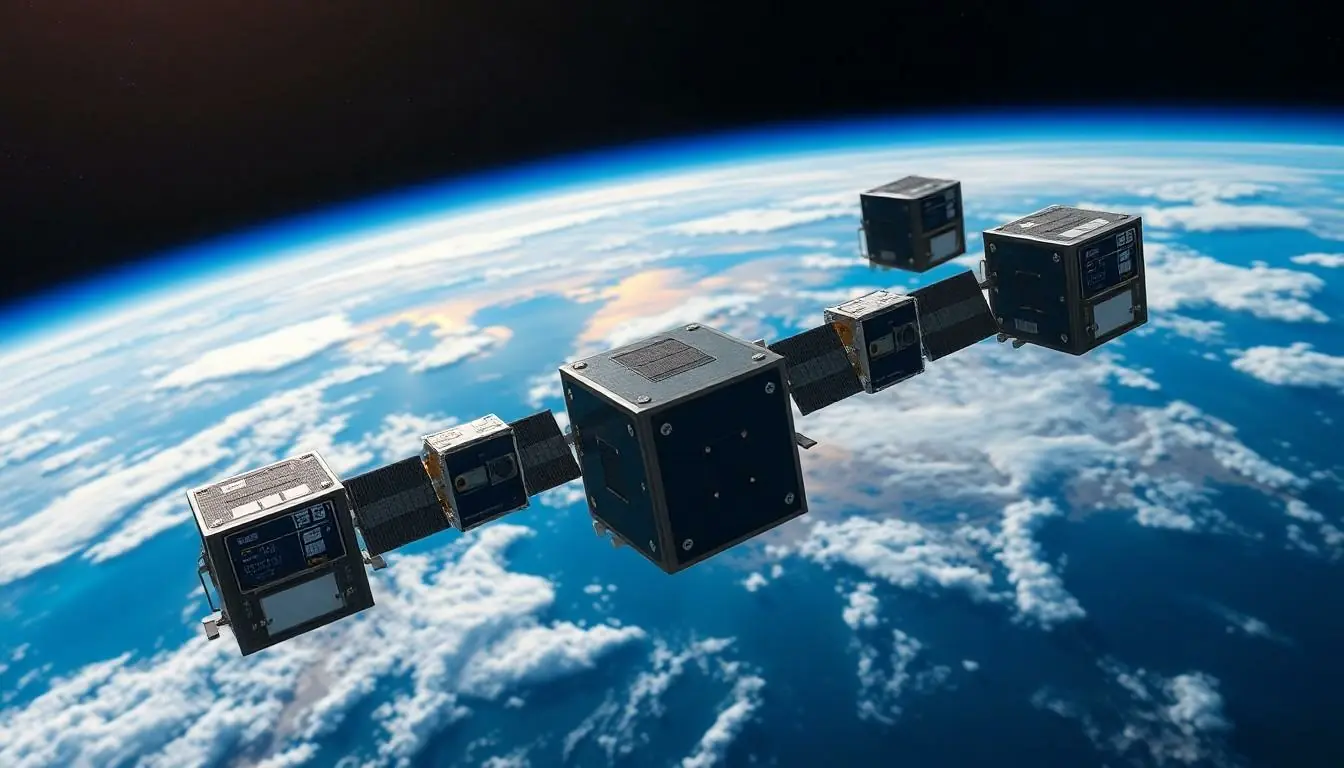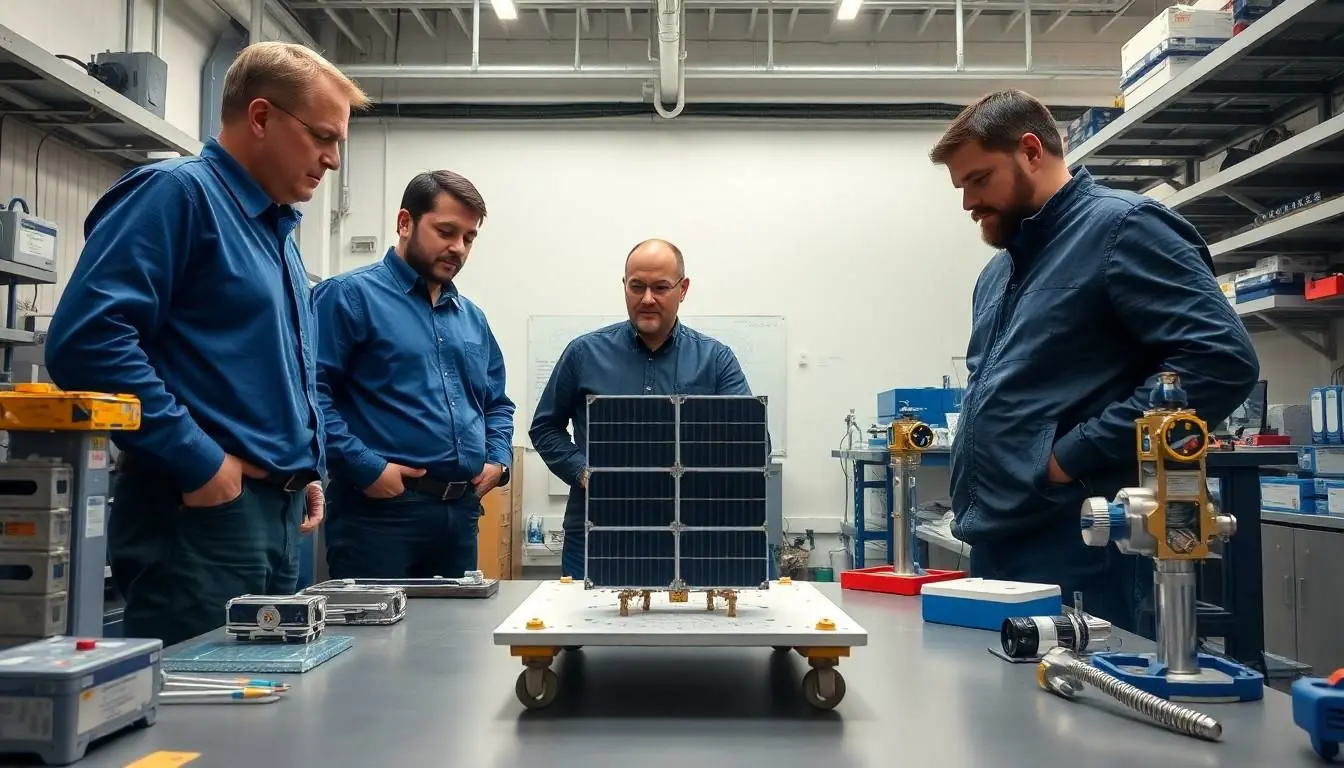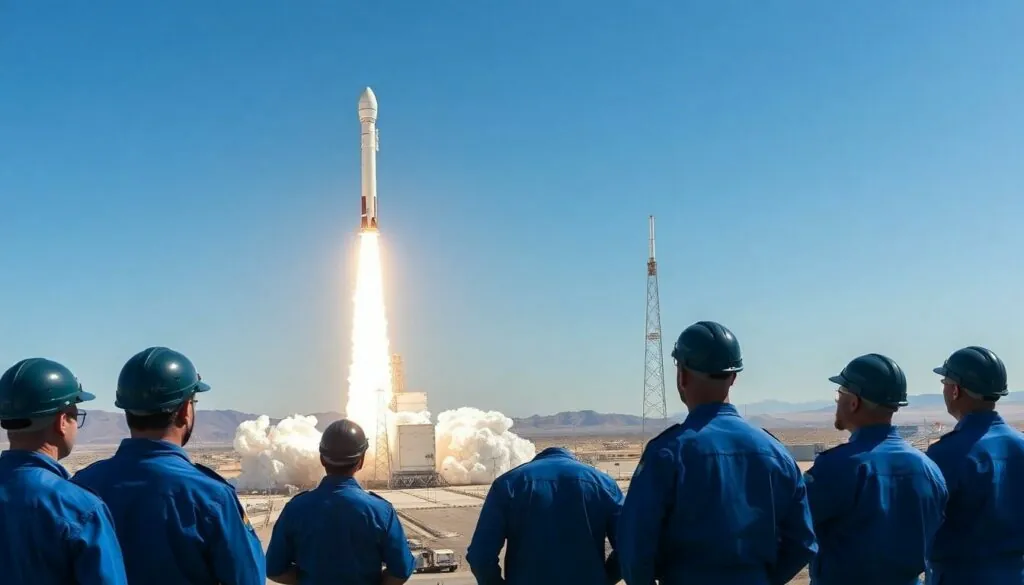Table of Contents
ToggleSpace: the final frontier—or at least it used to be. With new space technology blasting off at warp speed, the cosmos is becoming more accessible than ever. From reusable rockets that make launching a satellite feel like ordering takeout to satellites that can spot a penny from orbit, the advancements are nothing short of mind-blowing.
Overview of New Space Technology
New space technology transforms access to space and expands its potential. Reusable rockets represent a significant advancement, simplifying satellite launches and lowering costs. These rockets allow companies to launch multiple missions with the same hardware, drastically reducing expenses.
Advanced satellite technology drives improvements in monitoring capabilities. High-resolution satellites now detect small objects from orbit, providing crucial data for various applications, including environmental monitoring and national security. The ability to capture detailed images enhances global surveillance.
Innovations in propulsion systems also play a vital role. Ion propulsion, for instance, offers higher efficiency than traditional methods, enabling longer missions with less fuel. The implementation of these systems can extend spacecraft operational lifespans significantly.
Moreover, satellite constellations facilitate continuous global communication. Companies deploy networks of smaller satellites to ensure better coverage and reduced latency. These constellations enhance Internet access in remote areas, promoting global connectivity.
In addition, robotics and automation contribute to the evolution of space technology. Automated systems assist in satellite deployment and maintenance, allowing for more precise operations. These advancements not only improve efficiency but also reduce human risk during missions.
Emerging technologies, such as artificial intelligence, further bolster data analysis capabilities. AI algorithms process vast amounts of information, assisting scientists in making informed decisions about space exploration and resource management. By automating data interpretation, AI streamlines research processes.
New space technology continues to reshape the industry, driving innovation and expanding its capabilities. Each advancement represents a step towards a more interconnected and accessible space environment.
Key Innovations in New Space Technology


New space technology encompasses a variety of groundbreaking advancements. These innovations transform the way organizations conduct missions and explore space.
Satellite Miniaturization
Satellite miniaturization significantly reduces costs and increases deployment efficiency. Small satellites, or cubesats, now provide capabilities previously reserved for larger models. Less than 30 kilograms can demonstrate high-resolution imaging and data collection. These compact units allow for constellations that enhance global coverage and create numerous applications in Earth observation, remote sensing, and communication. Miniaturization also promotes agile deployments, making it easier for governments, universities, and startups to participate in space missions.
Reusable Launch Systems
Reusable launch systems mark a crucial shift in space transportation economics. SpaceX’s Falcon 9 rocket exemplifies this innovation, allowing a single rocket to be flown multiple times, which drastically reduces the cost per launch. Up to 90% savings come from reusing components such as first stages and boosters. This advancement enables frequent access to space, making it possible for businesses and governments to launch satellites or conduct experiments with lower financial barriers. Creativity in design and engineering leads to greater sustainability and reliability in space missions.
In-Space Manufacturing
In-space manufacturing opens new possibilities for resource utilization in orbit. Techniques like 3D printing enable the construction of satellites and components directly in space. Materials can be sourced from asteroids or other celestial bodies, paving the way for long-term space missions. The ability to create infrastructure while in orbit allows for on-demand production and repair of equipment. Such advancements reduce the need for heavy payloads during launches and extend operational lifespans of missions, ultimately enhancing capabilities in deep space exploration.
Impact of New Space Technology
Innovations in space technology profoundly impact various sectors, shaping a new era of exploration and discovery.
Commercial Space Exploration
Commercial space exploration undergoes rapid transformation due to advancements in technology. Companies invest significantly in reusable launch systems, reducing costs and maximizing mission frequency. Initiatives like SpaceX’s Starship enhance capabilities for crewed and cargo missions beyond Earth. Numerous private organizations engage in lunar and Martian exploration projects, expanding opportunities for research and commercial ventures. Partnerships between government agencies and startups streamline mission frameworks, opening new channels for innovation and business. Emerging markets for space tourism, satellite servicing, and asteroid mining present additional revenue streams, driving the space economy forward.
Scientific Research Advancements
Scientific research benefits immensely from new space technologies. Enhanced satellite capabilities provide unprecedented data resolution for climate monitoring and Earth observation. Modern satellites allow researchers to gather insights into changing ecosystems and natural disasters, leading to more informed decision-making. Advanced propulsion systems extend mission durations and capabilities, enabling deeper space exploration and longer stays on celestial bodies. Additionally, in situ resource utilization techniques promise to transform resource management, allowing astronauts to harness materials directly from other planets. These advancements pave the way for breakthroughs in understanding the universe and developing sustainable practices for future exploration.
Challenges and Considerations
Advancements in space technology bring new challenges that require careful attention. Regulatory frameworks and policy formations must adapt quickly to keep pace with innovation in the industry.
Regulatory and Policy Issues
Regulations surrounding space operations strongly influence technology deployment. National and international law must address issues like satellite placement, frequency allocation, and traffic management to ensure safe operations. Collaboration among space-faring nations helps establish policies that promote fairness and safety. How governments prioritize regulations affects access to space, as delays in approvals can hinder launch schedules. Emerging commercial actors push for clearer policies, enabling them to innovate while complying with existing frameworks. Organizations must remain vigilant about evolving regulations to navigate potential obstacles effectively.
Environmental Concerns
Concerns related to environmental sustainability are crucial in the realm of new space technology. Space debris poses significant threats to both operational satellites and future missions, necessitating effective mitigation strategies. Developing eco-friendly propulsion systems can minimize harmful emissions during launches. Designing and implementing sustainable practices during satellite production also reduces environmental impact. Assessing the potential consequences of increased activity in space helps scientists understand its effects on Earth’s atmosphere. As the industry continues to expand, addressing these environmental issues remains essential to retain a balance between exploration and preservation.
The rapid evolution of space technology is fundamentally transforming the landscape of exploration and commercial ventures. With advancements in reusable rockets and satellite miniaturization, access to space has never been more feasible. The integration of artificial intelligence and robotics enhances operational efficiency and data analysis, paving the way for innovative solutions in various sectors.
As new markets emerge in space tourism and resource management, the potential for economic growth is immense. However, addressing challenges like regulatory needs and environmental impacts remains crucial. The future of space exploration hinges on balancing innovation with responsible practices, ensuring that humanity’s journey into the cosmos is sustainable and beneficial for all.





